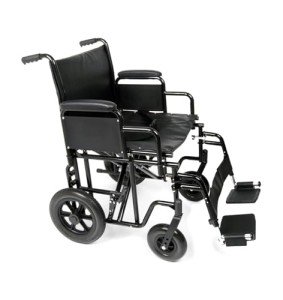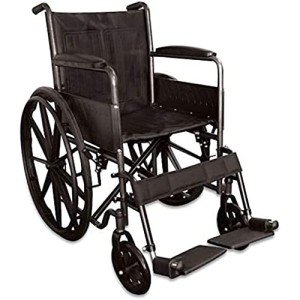See What Bariatric Mobility Equipment Tricks The Celebs Are Making Use…
페이지 정보

본문
 Bariatric Mobility Equipment
Bariatric Mobility EquipmentBariatric mobility equipment is designed to safely support individuals with a higher weight capacity. These specialised aids use more stability for overweight clients, assisting them remain mobile and active.
Healthcare facilities need to know the special requirements of bariatric equipment and comprehend how to evaluate its security functions. This short article will examine the kinds of bariatric equipment offered and suggest best practices for evaluating this patient handling equipment before buying.
Wheelchairs
bariatric wheelchair recliner wheelchairs are specialised mobility aids created to support individuals who can't or have problem walking due to their weight or health conditions. They're similar to basic wheelchairs, however they can safely support higher weight capacities and have larger seats to accommodate a large range of body types.
Along with being created to support heavier weights, bariatric wheelchairs are typically made with enhanced sturdy frames and additional cushioning to develop a comfy seating service that assists users regain their independence. These functions ensure that people who use them can leave the house and travel around with self-confidence, comfort and security.
A variety of different setups and modifications are readily available to customize a bariatric wheelchair weight wheelchair, consisting of seat measurements, height and seat angle, leg rests, footplates, front caster outriggers and adjustable backrests. Extra accessories such as mudguards, head and armrest covers, drink holders, tablet holder and trays are also frequently fitted.
All major varieties of wheelchair can be highly customized for users, depending on their needs and use. For example, some wheelchairs can be easily changed by a health care professional to meet specific physiognomic requirements, while others are more highly personalized and feature adjustable components such as the rear axle position, postural assistance settings and the ability to add additional padded areas to the chair.
Wheelchairs can be utilized by individuals living separately or receiving home healthcare, however they can likewise assist those with a more long-term or long-lasting special needs. For lots of individuals, a bariatric wheelchair is the only method to stay mobile and lead a dignified and fulfilling life. Selecting the best wheelchair is a choice that should be taken with care, and it's suggested to visit a skilled mobility professional such as Broda to discuss the options offered.
Stretchers & & Carts
Bariatric stretchers and carts make moving bigger patients simpler. They have wider frames and greater weight capabilities than basic medical facility movers, with enhanced deals with to prevent employee pressure. They also have battery-powered hydraulics that allow staff to raise and decrease the client without manually raising or reducing them, lowering the danger of back injuries. Some have expandable wings to alleviate body positioning throughout cleaning or surgical treatment preparation, and others have a reclining back-rest to increase comfort.
The capability to raise and Bariatric mobility equipment move bigger patients securely and easily improves the quality of care supplied by health care specialists. It decreases the number of client transfers and enables caregivers to concentrate on medical jobs versus physical maneuvers. It can likewise support self-respect for bariatric clients who might otherwise feel vulnerable or embarrassed to need the assistance of others. Bariatric equipment also assists lessen handling injuries and other pricey healthcare issues.
There are numerous style variations of a stretcher trolley cart, and choosing the ideal design for your facility depends on space factors to consider, available budget plan, and wanted functions. Alternatives include hydraulic carts with motorized height change that enhance patient convenience and caregiver ergonomics, and manual designs for environments where electricity or hydraulic systems aren't readily available.
Choosing a quality bariatric transport stretcher or cart from a relied on name brand like Stryker, Hausted, Hill-Rom, Pedigo, or Gendron ensures a durable and reputable item that fulfills your center's requirements. Ask your supplier to suggest a design that fits your specific requirements, and make sure to check that the cart can be used with all docking stretcher heads. This guarantees you get the very best worth and versatility from your financial investment.
Ceiling Lifts
Overweight clients present distinct challenges for caretakers since their increased mass needs specific equipment to safely transfer them from location to location. Bariatric mobility aids like ceiling lifts enable these individuals to get out of bed and move about their environment with higher ease, promoting self-reliance and dignity.
Choosing the best ceiling lift for your center depends upon the specific requirements of your care group and client. Factor to consider should include the individual's weight and mobility levels, and the environments where he or she will be utilizing the lift. For instance, if you will be moving the patient from space to room within your center, a repaired ceiling lift system is a much better alternative than a portable one, as it offers higher lifting capabilities and stability.
A ceiling lift system includes a motor system set up in the ceiling in addition to a track that extends over an area, such as a bed room or bathroom. An individual is lifted from a chair or bed utilizing straps connected to the ceiling lift. Caretakers control the motor and movement of the lift via a portable pendant.
The Guldmann series of ceiling lifts for bariatric people supports transfers, rearranging, and health procedures in a dignified and gentle method, permitting people to be transported in a comfortable position with the minimum of effort. The lifting capacity of the ceiling lift is also crucial - it's suggested that a bariatric lift be used for patients whose weight is above traditional lift limitations, as these are created to support a larger load.
Caregiving personnel needs to receive training in the operation of this equipment to make sure a smooth and safe transfer procedure. Make sure to follow recognized cleansing practices for lift slings, including disinfection and laundering temperature levels and cycles. In addition, developing wall-mounted hooks in bariatric rooms to hang the slings between usages can help in reducing prospective contamination and infection.
Floor Lifts
Bariatric flooring raises provide the safety, performance, and versatility that caretakers require to support overweight clients with a variety of mobility needs. These motorised systems cradle and lift individuals as much as 1000 lbs, with caregivers controlling the movement and height using handheld pendants. They usually include a U-shaped base with a vertical supporting mast and an overhead mechanical arm (boom) that extends horizontally. Completion of the boom features a spreader bar with hooks or clips to accept a full-body sling.
 These specialised mobile lifts enable users to securely transfer in between different components, consisting of bed, wheelchair, and commode. This flexibility also assists to decrease physical needs on staff, promoting safer handling and decreasing the danger of musculoskeletal injuries for both clients and caretakers.
These specialised mobile lifts enable users to securely transfer in between different components, consisting of bed, wheelchair, and commode. This flexibility also assists to decrease physical needs on staff, promoting safer handling and decreasing the danger of musculoskeletal injuries for both clients and caretakers.In addition to incorporating safe handling techniques, center supervisors can help avoid musculoskeletal injuries by ensuring equipment is correctly preserved and kept. This consists of frequently examining and cleaning up bariatric lifts to guarantee they function properly, in addition to teaching staff the finest practices for running slings and lifting mechanisms.
Informing both staff and users on the correct usage of bariatric equipment promotes the health, convenience, and self-reliance of obese people. With regular skills practice, good body mechanics end up being second nature for everybody included, decreasing the threat of injury during transports and daily care activities. Routine training sessions can be particularly important for new or short-lived staff members, and Bariatric Mobility Equipment it's a good concept to include hands-on practice sessions till efficiency is confirmed. Dedicated staff training also helps to reinforce the concepts of Safe Patient Handling, which are developed to secure both clients and caretakers during transfers.
Walkers
Bariatric walkers are a type of strolling frame with two or four wheels. They are normally utilized to assist people with mobility problems get around, and they can be a helpful option to a wheelchair. Walkers are suggested for people who have actually had current leg or hip surgery, those with mild balance problems and others who can not completely support their weight by themselves.
bariatric living aids walker frames are developed to accommodate much heavier users and feature large wheels that can proceed unequal surfaces. Many are likewise geared up with a seat and trays for bring items. Some models are lightweight bariatric wheelchair and made with a metal or aluminum frame to resist breaking under heavy usage. Others are built from plastic or a soft product like foam to reduce the pressure on hands and wrists. Some are equipped with hand grips that are adjustable in height. These can be changed with softer or bigger grips that are more comfortable for the user.
Most contemporary walkers are designed to fold down when not in usage. This makes them simpler to keep in a closet, under a bed or other remote location. When they are required again, they can be quickly unfolded to start utilizing. Some bariatric walkers are even motorized, making it simpler to maneuver and transport over longer ranges.
Regardless of which type of walker is picked, it is essential to understand how to properly utilize the gadget. It is necessary to keep the walker upright as you move, and prevent strolling behind it. Rather, enter it with your excellent leg first, then bring the hurt or weaker leg forward. When it comes time to climb a set of stairs, the walker needs to be lifted or pushed up onto the steps while leaning into it for support.
- 이전글لسان العرب : طاء - 25.02.06
- 다음글لسان العرب : طاء - 25.02.06
댓글목록
등록된 댓글이 없습니다.

